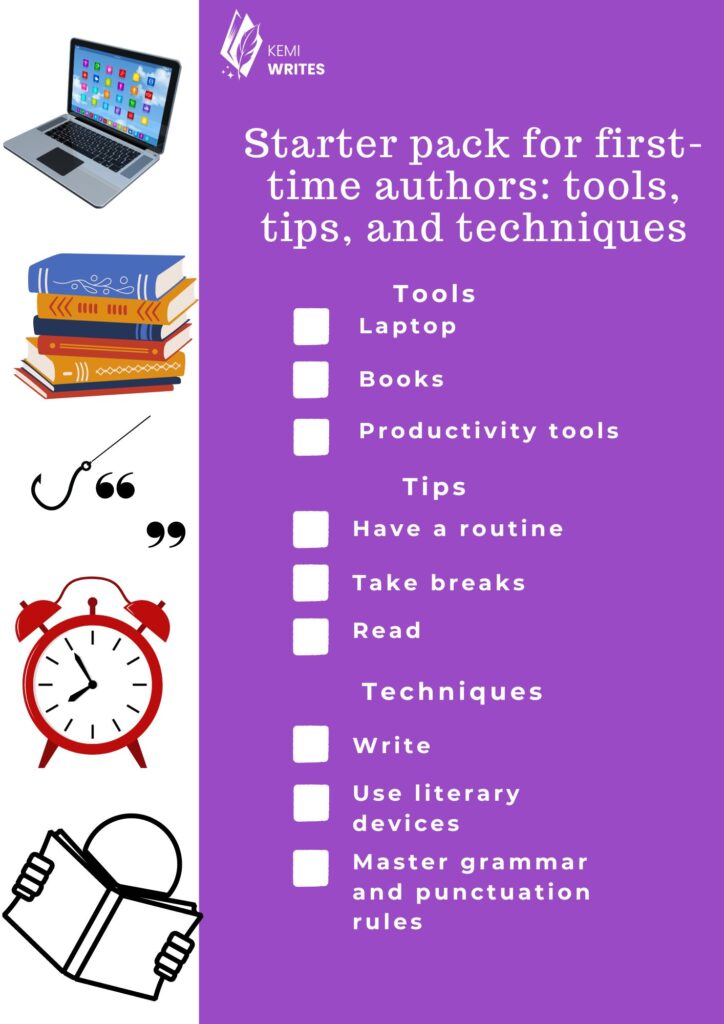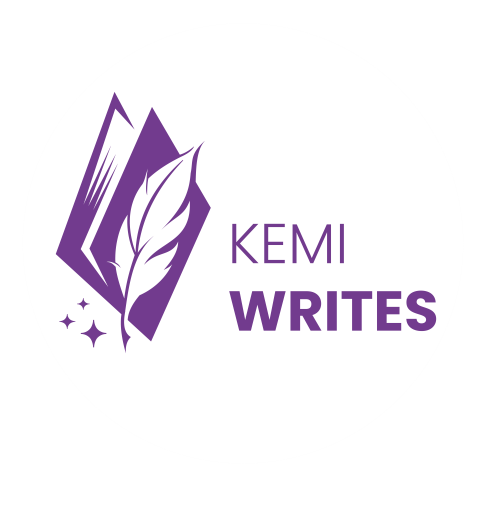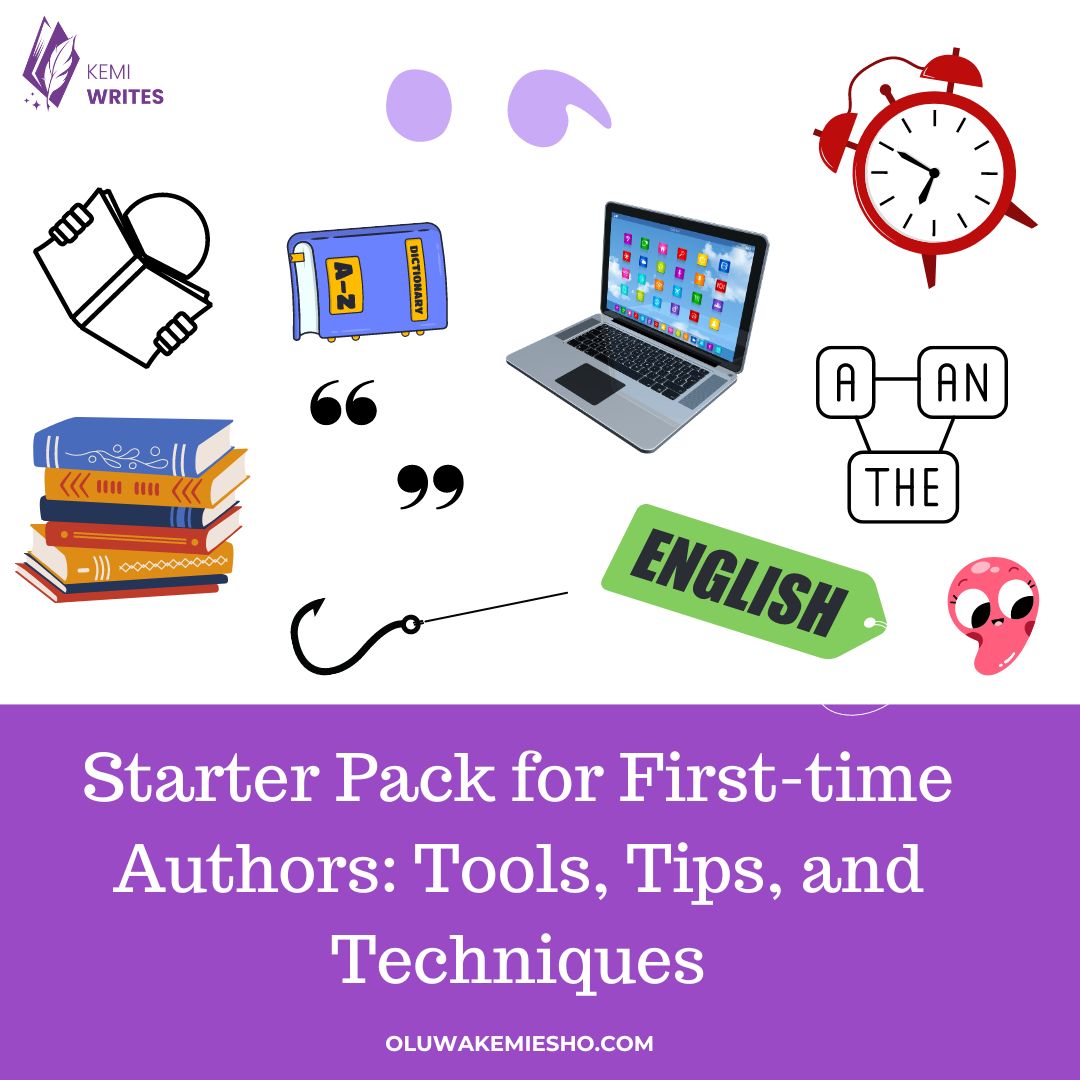Being a first-time author is exhilarating and challenging, and you’re experiencing a cocktail of emotions, but here you are writing your first book.
I’ve been a first-time author, and I understand your feelings, and that’s why I’m here to help you make your journey more smooth sailing.
I’ll be upfront with you; you’re in for a ride – it will be a bumpy one – but with this starter pack, you’ll have what it takes to make the most of it. Even if you’re not a first-time author, you can still learn one or two things from this starter pack.
I’ll be sharing some tools, tips, and techniques to help you on your journey from a blank page to a complete first draft.
Tools
Laptop: You need one except you want to go the pen-to-paper route. Having a functional laptop can be the difference between writing with ease and getting frustrated.
Software: Word processors and editing software (not a substitute for a professional editor) are your best allies going forward. Some of this software comes with your laptop and some are free to download. Many writers use MS Word, but there are other variations, and they often have built-in editing tools (again, they’re not to be relied on).
Books: How? You may ask. Style guides fall under this category because whether you self-publish or publish traditionally, you need a style guide. General books are also great tools, and I’ll write more about this in the section for tips.
Productivity tools: Any tool that will aid your productivity is welcome. For instance, I use the reminder app to remind me to read for an hour every day. I also have an app (Stand Up) that reminds me to get up and move around every forty-five minutes (you can set it to whatever suits you) so I don’t hurt my back from sitting for too long. You can also get apps that can help you map out ideas if you’re into visuals.
There are many tools – some are free while you have to pay for some – that you can use. Now, over to tips.

Tips
Have a routine: This helps you create a specific time rather than look for any time to write. You don’t have to be at your laptop for eight hours in a day to establish a routine. Look at your calendar and prioritise a time of day you can dedicate to your writing and try to do this every day; it can be as little as thirty minutes or as much as one hour – it’s your call. If you’re a first-time author, I’ll suggest you start with small chunks of time rather than trying to write for an extended period.
Take breaks: If you have a long routine, take frequent breaks. You might think that’s not productive, and it would disrupt your flow, but you’ll be more productive taking breaks than working for a long time. You can read about the Pomodoro Technique.
Read: I can’t overemphasise this enough. Read any book you can lay your hands on even if it’s not in your genre. In the words of one of my postgraduate lecturers, be a ‘promiscuous reader.’ Whether you’re a first-time author or a ten-time author, the truth is that you hone your writing skills by reading, and you get ideas as well.
Write first, edit later: If you’re anything like me, you want to edit as you write but don’t. This is one surefire way to get yourself frustrated and possibly give up on that idea. I’m a changed person now (or still in the process of changing), and what I now do is to let it all out and come back to edit later. A poorly written first draft is what it is, a first draft. There’s always plenty of time to refine and perfect, and nobody will see your first draft unless you want them to.
Leave something for later: I got this advice from an elderly friend when I started working and though she was talking about work, I’ve adopted it in my writing. I try not to write all the ideas bustling in my mind at once. I sometimes stop midway and step away so I can have something to write when I come back another day. This will also help you have a routine – you know you have something to write when you sit before your laptop, and you’re not in search of words.
There are many more tips you can read about.
Techniques
Write: ‘Isn’t that what you’re doing already?’ You may ask. I just have to make it clear. The best writing technique for a first-time author and any author at all is writing. That’s the best way to start and get better. Write often. Write even when you think you’ve written rubbish (PS: you’re sometimes not the best judge of your own writing, so don’t be too hard on yourself.)
Use literary devices: Whether you’re writing fiction, nonfiction, or academic text, literary devices let your writing sing; it adds flavour and colour to your words. In some genres than others, there’s more liberty to use literary devices, for instance, academic writing discourages flowery language, but a little simile and metaphor never hurts. Just don’t overdo it.
Start with a strong hook: The first line of your book will determine whether your readers will read to the end or close it as soon as they open it. Draw your readers in (more like entice them with your first line), and make sure the rest of the book is as good as the first line. Nothing hurts a reader more than a disappointing middle of a book. As a first-time author, you want to leave a lasting impression on your readers.
Master basic grammar rules and punctuations: You’ll send the book to a copy editor, yes, but you still have to write with these rules in mind so that your writing is crisp and clear and so that your copy editor can make sense of it.
I know this must have been a long read but give yourself a round of applause if you got to this point. It means you’re serious about authoring your book and you’re keen on getting relevant information.
Until another blog post, keep writing! I’m rooting for you. From one first-time author to another first-time author.
PS: If you write general interest books or academic books in humanities and social science, I specialise in these areas and would like to work with you. Send me an email.
Read more: What to Expect When You Contact a Copy Editor: The A-B-C-D of the Copy-editing Process

